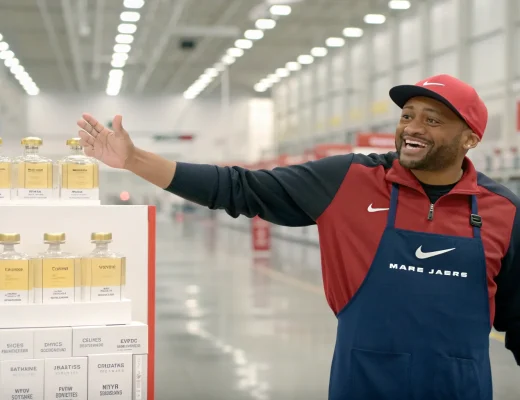15 Ways Companies Create a Culture of Ownership and Empower Employees
Creating a culture of ownership and empowering employees are essential modern business strategies. We asked industry experts to share one thing their companies do to create a sense of ownership and accountability among employees — and how this impacts their work. Discover actionable insights for organizations seeking to enhance their workplace culture.
- Offer Equity Stakes to Boost Engagement
- Involve Employees in Goal Setting Process
- Empower Teams to Co-create Solutions
- Give Authentic Voice in Decision Making
- Implement Structured Accountability Systems
- Foster Autonomy and Clear Responsibilities
- Prioritize Transparency in Business Operations
- Assign Complete Ownership of Client Relationships
- Build Connection to Shared Purpose
- Use Measurable Expectations for Improvement
- Celebrate Smart Failures for Innovation
- Trust Employees with Decision-Making Power
- Implement Transparent Performance Tracking System
- Distribute Profits and Offer Flexible Schedules
- Align Departments with Company Strategy
Offer Equity Stakes to Boost Engagement
This might sound somewhat outrageous, but I give staff a 1% stake in the company after one year of service, and then if they reach five years, I double it. I acknowledge that not every business can do this, but we figured out early that our company was the sum of its people, and not keeping good employees or having high staff turnover would be our undoing after it affected us in our first few years. It has been a game changer for us; the team has fully embraced the idea, and the quality we provide improved instantly. Staff retention? It’s no longer an issue.
 Zack Raei
Zack Raei
Director, ZR Decorating Services
Involve Employees in Goal Setting Process
One of the most effective strategies I implement with clients to create ownership and accountability is involving employees directly in setting goals and shaping priorities. Instead of dictating objectives top-down, we create space for employees to co-create team goals and define how success will be measured.
This shifts the mindset from, “I’m doing this because my boss said so,” to, “I’m invested in this outcome because I helped design it.” Employees feel trusted and empowered, which drives engagement and stronger performance.
At one multi-state client, we rolled out quarterly goal-setting workshops where employees aligned their personal objectives with company-wide priorities. Within six months, project deadlines improved by 35%, cross-team collaboration increased, and managers reported fewer bottlenecks.
When people have a voice, they take ownership. And when accountability is shared, results follow.
 Brittney Simpson
Brittney Simpson
HR Consultant, Savvy HR Partner
Empower Teams to Co-create Solutions
One way we build ownership is by allowing employees to co-create solutions instead of simply following instructions. A clear example was when we introduced a new performance review system. Instead of implementing a template from HR, we opened it up to the team. They shaped how feedback would be given, what “success” looked like, and how progress would be tracked.
Another example came during our app redesign. Designers, engineers, and even creators using the platform had a voice in shaping the final product. That sense of shared authorship meant people weren’t just shipping features; they were building something they could point to with pride.
The impact was consistent:
1. Accountability grew because people defended what they helped design.
2. Engagement spiked since the work felt personal.
3. Performance improved as teams delivered faster and with higher energy.
Ownership works best when people feel like builders, not bystanders.
 Taylor Humphries
Taylor Humphries
CEO, Ranked
Give Authentic Voice in Decision Making
One way we build ownership and accountability is by giving our team an authentic voice in decisions that affect their work. Whether it’s refining a process, choosing new tools, or shaping client strategies, we ensure everyone has a seat at the table. When people know their ideas matter and will be acted upon, they naturally feel more invested in the outcome. We also tie performance to clear, measurable goals, so success is something each team member can point to and say, “This was my win.”
The impact has been tremendous: our employees take pride in their results, collaborate more effectively, and go the extra mile because they don’t just feel like they’re working for the company; they feel like they’re building it with us. That sense of shared responsibility is what keeps our culture strong and our clients happy.
 Jared Weitz
Jared Weitz
Chief Executive Officer, United Capital Source
Implement Structured Accountability Systems
Since one of our values is “Own It,” ownership and accountability are table stakes for success in our organization and in the HR consulting work we do with our clients. We have several internal methods and meeting rhythms to ensure internal and external accountability.
We maintain a weekly team meeting where we provide company and client updates, engaging in collaborative discussions to solve client issues that have arisen. We hold daily huddles where the team outlines their priorities for the day and can share their obstacles — and we discuss who can help them overcome these challenges and how.
For clients, we maintain quarterly priority plans so we can report on progress during bi-weekly meetings with client contacts. Our CEO and Director of Operations (me) host quarterly check-ins to ensure client satisfaction and offer the client an opportunity for Consultant feedback. We also frequently run hours reports to see if consultants are delivering against budgets and outcomes. Additionally, we maintain bi-weekly check-ins with consultants and hold quarterly performance management discussions.
These structures cultivate a sense of accountability among the team because there are numerous occasions throughout the employee and client lifecycle where we hold ourselves and others accountable. Since “Own It” is one of our values, it also creates a sense of self-responsibility where the team strives to meet the high standard we set for them in terms of internal performance and client deliverables.
 Eric Mochnacz
Eric Mochnacz
Director of Operations, Red Clover
Foster Autonomy and Clear Responsibilities
Every employee has clear responsibilities and the autonomy to execute without someone looking over their shoulder. We’ve maintained a culture where we don’t micromanage — we expect our team to own their work, stay on task, and deliver results. This level of accountability creates a culture where people take pride in what they do, and it shows in the quality of our projects and the trust we build with our customers.
This approach to accountability has been a significant lever in our growth. In a short period, it has helped us scale while maintaining quality — resulting in more repeat business, more referrals, and a steady pipeline.
 Reid Rupp
Reid Rupp
Owner, JP Exteriors
Prioritize Transparency in Business Operations
Transparency is the key to empowering your employees with a stronger sense of ownership. Too many companies operate with opaque business structures that can cause workers to feel uncertain about the value of the tasks they’re completing or why they’re even necessary.
These opaque structures may seem easier when it comes to saving time, but it’s a flawed practice that can lead to more workers becoming disengaged with their jobs. Furthermore, a lack of clarity over workloads can cause efficiency within teams to fall and leave employees struggling for motivation.
Always prioritize a transparent operational model, where employees know the value of the work they do and how it benefits the company as a whole. You should also create a culture where workers feel emboldened to ask questions to gain more insight into operations.
If your employees know the importance of their tasks and how they can benefit your business as a whole, they’re more likely to stay engaged with their workloads and remain more productive when it comes to keeping on top of deadlines.
 Matthew Crook
Matthew Crook
General Manager, PeopleHR
Assign Complete Ownership of Client Relationships
One successful tactic in use here is giving team members complete ownership of certain client relationships. Owning a client relationship is like being an entrepreneur or business owner. It replicates my own journey as a business owner, and it’s very motivating for my employees.
Here is how it works. Instead of dividing tasks across multiple people, I assign one employee or small team as the main point of contact for a customer’s shipments; they then manage the process end-to-end — from booking to delivery — and take direct responsibility for the outcome.
This way of working creates a sense of pride in their work. They’re not just “moving freight,” they’re making decisions and building trust and rapport with a client. The impact is significant: employees learn to be more proactive in solving problems, customer service becomes more consistent, and clients appreciate contact with someone who knows their business inside and out.
 Robert Pace
Robert Pace
President at World Trade Logistics, Inc., World Trade Logistics, Inc.
Build Connection to Shared Purpose
I am convinced that the true value of a company lies in its people. That’s why we actively create conditions where everyone feels connected to a shared purpose by building a space of transparency and openness. We regularly hold meetings to discuss goals, results, and challenges. Every employee knows that the company’s growth depends on their contribution.
We also focus on personal responsibility. We trust our team to make decisions within their areas of responsibility. This not only increases engagement but also fosters a genuine sense of ownership over the outcome.
Another priority for us is a culture of support. At our company, it’s common to share ideas even if they may seem risky. Everyone has the opportunity to be heard, and this motivates people to take an active role in processes.
The result? Employees don’t work “for the company” but with the company. They feel that their work truly matters, and that brings more energy and inspiration to bring bold ideas to life.
 Alexandr Korshykov
Alexandr Korshykov
Founder & CEO, DreamX
Use Measurable Expectations for Improvement
We use the Entrepreneurs’ Operating System (EOS) to manage our company. It is all about measurability and accountability, and most of the people we’ve hired have embraced both because we use them, as EOS preaches, in a mostly positive manner.
Employees should understand the expectations of their managers, and you cannot understand those if they’re vague. For example, if you tell an employee that you want to see improvement but don’t say by how much or when, they could improve but less than you were thinking, slower than you were thinking, or both. They’ve done what you’ve asked, but not what you intended. That’s on you, not them.
 Steven Rothberg
Steven Rothberg
Founder and Chief Visionary Officer, College Recruiter
Celebrate Smart Failures for Innovation
One of the most important ways we make our employees feel like they own their work and are responsible for it is by celebrating “smart failures” in the name of innovation.
A few years ago, when I first joined the company, our engineering team was afraid to take on big projects that could fail. They feared they would get in trouble or even lose their jobs if their ideas didn’t work out.
To address this, we implemented a “post-mortem” process that encourages our teams to thoroughly analyze projects that didn’t go as planned. The goal is not to find someone to blame, but to identify the most valuable lessons that can be applied to future projects. We call these “intelligent failures” because they were well-planned and executed, but didn’t achieve the results we were hoping for.
This small shift in mindset has had a significant impact on our culture of innovation and responsibility. Our teams now feel empowered to experiment and take calculated risks, knowing that their efforts will be appreciated regardless of the outcome.
By celebrating these “smart failures,” we’ve created an environment where our employees take ownership of every stage of their projects, from ideation to outcome analysis. They are invested in the overall success of the business, not just their individual work. This fosters a strong sense of responsibility and empowerment that has fueled our rapid growth over the past two years.
 Ryan McDonald
Ryan McDonald
COO, Resell Calendar
Trust Employees with Decision-Making Power
One of the most powerful ways a company creates a sense of ownership and accountability is by trusting employees to make decisions about their work. Instead of having every small choice come from a manager, employees are encouraged to take charge of their projects and find the best way to complete them. This doesn’t mean they are left alone without help. It means the company gives them space to think, act, and take responsibility for the results.
When people are trusted in this way, their attitude changes. They stop feeling like they are just “working for someone else” and start feeling like they are personally responsible for success. That shift is important. If an employee feels like the outcome depends on them, they are more likely to put in real effort, pay attention to detail, and try to solve problems on their own. They also begin to care more deeply about the company’s goals, because they can clearly see how their own work connects to the bigger picture.
This approach also helps employees grow. By making decisions, they gain confidence and learn new skills. They see what works, what doesn’t, and how to adjust. Over time, they don’t just become better workers — they become leaders who can guide others. That is a win for the company too, because strong, independent thinkers help the whole team move forward faster.
The impact on the workplace is clear. When ownership is part of the culture, employees don’t just “do their jobs.” They take pride in their work. They push for higher standards. They step up when challenges appear, instead of waiting for someone else to fix things. Teams with this mindset are usually more motivated, creative, and committed to reaching results.
In short, by giving employees decision-making power and holding them responsible, companies create a culture of ownership. This leads to stronger work, happier employees, and a company that keeps growing.
 Garrett Lehman
Garrett Lehman
Co-Founder, Gapp Group
Implement Transparent Performance Tracking System
I understand that this might sound simple, but I’ve found that providing bonuses or commissions when employees perform exceptionally well motivates them to work harder. It’s challenging to constantly monitor remote workers, so it’s all about incentives (money).
Actually, we implemented a simple CRM dashboard that tracks everyone’s daily achievements — deals closed, calls made, and problems solved. This isn’t for micromanaging but for celebrating successes. Every Friday, we highlight the top performers and discuss what they did differently. People began sharing their own strategies to get featured on that board.
The game-changer was making metrics transparent. Everyone can see each other’s numbers. Suddenly, I’m not the one pushing for accountability — they’re pushing each other. The low performers either improve or leave on their own accord.
For remote teams especially, ownership comes from visibility. They take ownership of their numbers because everyone can see them. We transitioned from me chasing updates to them proactively posting their wins in Slack.
While money motivates, peer recognition drives ownership. Make their work visible, celebrate it publicly, and watch them take ownership just to stay at the top of that leaderboard.
 Joshua Murphy
Joshua Murphy
CEO, CRM Squirrel
Distribute Profits and Offer Flexible Schedules
Our marketing agency distributes profits as quarterly employee bonuses to ensure that our team is financially invested. We also offer lifetime referral bonuses for any clients our team brings on, so everyone is encouraged to help grow the business. There’s also a great deal of operational transparency so everyone understands (hopefully) the agency’s health.
The team has a very flexible schedule — including a hybrid work environment with access to a co-working space and unlimited PTO. However, we also track our productivity with time-blocking so the team understands our profitability. This allows everyone to set their own schedule but also be effective with how they spend their time.
Overall, this creates a team culture that’s relaxed but professional. We don’t have to force culture or values on people. It happens naturally, and everyone understands what’s expected of them. We also have very little staff turnover because people appreciate being treated fairly and working with other professionals.
 Robert Carnes
Robert Carnes
Marketing Director, GreenMellen
Align Departments with Company Strategy
We build ownership by transparently communicating our company strategy at an annual strategy session and aligning every department to it. Department heads set KPIs for their teams, and everyone — from managers to regular employees — reports at different levels of detail. We also hold regular alignment meetings (monthly, quarterly, yearly), so progress is visible and contributions are linked to results.
Equally important, we encourage initiative and experimentation. Any employee can pitch a growth idea, and we provide space for safe testing. This gives people a sense of influence over the company’s direction — it makes strategy a shared mission rather than a top-down plan.
 Alex Bondar
Alex Bondar
CEO, Swag42
 Zack Raei
Director, ZR Decorating Services
Zack Raei
Director, ZR Decorating Services
 Brittney Simpson
HR Consultant, Savvy HR Partner
Brittney Simpson
HR Consultant, Savvy HR Partner
 Taylor Humphries
CEO, Ranked
Taylor Humphries
CEO, Ranked
 Jared Weitz
Chief Executive Officer, United Capital Source
Jared Weitz
Chief Executive Officer, United Capital Source
 Eric Mochnacz
Director of Operations, Red Clover
Eric Mochnacz
Director of Operations, Red Clover
 Reid Rupp
Owner, JP Exteriors
Reid Rupp
Owner, JP Exteriors
 Matthew Crook
General Manager, PeopleHR
Matthew Crook
General Manager, PeopleHR
 Robert Pace
President at World Trade Logistics, Inc., World Trade Logistics, Inc.
Robert Pace
President at World Trade Logistics, Inc., World Trade Logistics, Inc.
 Alexandr Korshykov
Founder & CEO, DreamX
Alexandr Korshykov
Founder & CEO, DreamX
 Steven Rothberg
Founder and Chief Visionary Officer, College Recruiter
Steven Rothberg
Founder and Chief Visionary Officer, College Recruiter
 Ryan McDonald
COO, Resell Calendar
Ryan McDonald
COO, Resell Calendar
 Garrett Lehman
Co-Founder, Gapp Group
Garrett Lehman
Co-Founder, Gapp Group
 Joshua Murphy
CEO, CRM Squirrel
Joshua Murphy
CEO, CRM Squirrel
 Robert Carnes
Marketing Director, GreenMellen
Robert Carnes
Marketing Director, GreenMellen
 Alex Bondar
CEO, Swag42
Alex Bondar
CEO, Swag42







